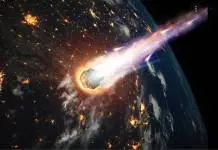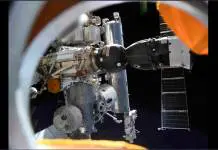After the launch of NASA’s planet-hunting spacecraft, Transiting Exoplanet Survey Satellite (TESS) on Wednesday, on top of SpaceX’s Falcon 9 rocket from Cape Canaveral. The fridge-sized satellite will get the green light to begin its mission after running a series of system checks over the course of the next 5 days.
The spacecraft’s observation purpose will be performed by its four packed CCD cameras, which will be switched on after 8 days in orbit according to crew members. To complete a special orbit around Earth like no spacecraft before, it will be responsible to carry out the necessary to monitor distant stars and planets that may be orbiting near the stars.
#ICYMI Yesterday at 6:51pm ET we launched a first-of-its-kind mission, @NASA_TESS, into Earth’s orbit to hunt for unknown worlds outside of our solar system, including some that could support life. Get the details: https://t.co/2lqhaEiHzT pic.twitter.com/i4v56UPafM
— NASA (@NASA) April 19, 2018
Orbit schedule of TESS
To expand the space covered by the satellite, it will be orbiting in a special highly elliptical orbit that it will broaden its observation range, enhancing the possibility of achieving the discovery of a new huge gas planet or a tiny rock sized haven, for example. It is also planned for TESS to expand its orbit in order to eventually get gravitational assistance from the Moon.
This slingshot move will allow TESS to eventually gain a more stabilized orbit, at about 40 degrees from the Moon’s orbital plane, allowing TESS to orbit Earth in about half the time it takes the Moon to orbit just once around it. This way, the satellite will achieve a stabilized point during the carrying of its mission over the course of the next 2 years.
TESS will allow Earth to broaden its space horizons very constantly, proving to be a rather helpful tool for analysts, experts, and NASA by providing them with constant new data that is collected every orbit. Every time TESS’s orbit gets close enough to Earth, the satellite will send its signal along with the data collected throughout its time on our orbit.
More photos from yesterday's Falcon 9 launch of @NASA_TESS → https://t.co/095WHX44BX pic.twitter.com/7Rb7NDIUgc
— SpaceX (@SpaceX) April 19, 2018
About TESS’s mission
TESS’s main goal is to find new exoplanets (planets outside our knowledge of the solar system or just outside our solar system) for scientists to study, but to do this it will first need to surveil over around 200,000 bright stars. With the possibility of a mission extension, “TESS is expected to find more than a thousand planets smaller than Neptune, including dozens that are comparable in size to the Earth”.
George Ricke, an astrophysicist said about the mission: “Public data releases will occur every four months, inviting immediate community-wide efforts to study the new planets, The TESS legacy will be a catalog of the nearest and brightest stars hosting transiting planets.”
TESS was originally proposed back in 2006 by several institutions, among them the MIT, to carry out its exploratory program. Yet, it wasn’t until 2013 that it was selected as an actual mission. And now it will be one of the largest orbital missions there is, TESS will pass through the Van Allen radiation belts to the highest point of its orbit, at 232,000 miles.
Source: NASA











